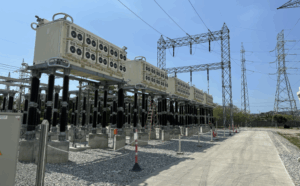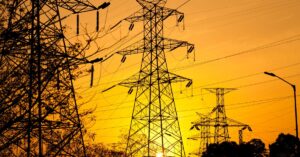
The challenges and opportunities facing Ireland’s energy industry
January 27, 2020
A group of leading figures from Ireland’s energy industry came together to discuss the country’s energy transition issues and current business landscape.
Hosted by pioneering power technology company, Smart Wires, guests included representatives from Enterprise Ireland, ESB, IDA, Irish Wind Energy Association, SuperNode, SSE, SEAI and UCD.
The discussion took place against the backdrop of the EU-funded Horizon 2020 Flexitranstore project – guests had the opportunity to view and tour Smart Wires’ revolutionary mobile power flow control unit, as it travels from the USA on its way to deployment on the Greek Transmission System.
Commencing proceedings, Smart Wires’ European Managing Director, Michael Walsh, asked the group about the industry issues keeping them awake at night, challenges to overcome, and progress they see being made.
Grid capacity and access was unsurprisingly a key focus of discussion.
For Noel Cunniffe from the Irish Wind Energy Association, grid capacity, public acceptance, and government policy are the key issues facing the wind industry. IWEA see a divergence between public policy and bringing renewables on to the grid that needs to be addressed.

Noel Cunniffe, IWEA
“Many of our new wind farm connections have non-firm access, due to grid capacity limitations. Congestion is a big issue which may prevent new wind farm connections and is constraining the output of existing wind farms. “If we’re to meet the Government’s renewable electricity target of 70% by 2030, technology companies such as Smart Wires working in partnership with System Operators could be a win-win for everyone.”
Jane McArdle from SSE Airtricity manages similar challenges with regard to constraints.

Jane McArdle, SSE Airtricity
“We can be granted access for a wind farm, only to find that shortly after we connect we’re constrained for three months. This technology is an obvious solution to reduce constraints, particularly when connecting new generation.”
John Fitzgerald, CEO of SuperNode, sees similarities between the challenges facing the Irish industry with those facing the rest of Europe. In this role he regularly meets with European stakeholders such as utilities, ENTSO-E, Eurelectric etc., and discusses the challenges of the future grid. They all see the need for increased levels of flexibility at transmission and distribution, and with generation and supply. John sees the pace of change as another industry challenge – technology is often evolving at a faster pace than policy, leading to suboptimal decision making.
John Fitzgerald, SuperNode
“The key challenge as we move toward the future grid is flexibility. It’s a big problem so there is huge scope for solutions – both technology and policy.”
Referring to his role in assessing and working with EU-funded projects at Enterprise Ireland, Philip Cheasty made the point that these funding initiatives provide a great opportunity for the industry at large.

Philip Cheasty, Enterprise Island
“Ireland is very strong in the area of energy related EU-funded projects. If it is something you already want to develop, this mechanism can be the ideal vehicle for moving a project on.”

Michael Walsh, Smart Wires
“Smart Wires’ positive experience with EU funded projects has certainly given our US management the appetite to locate even more high value work in Ireland and Europe.”
Rounding out the discussion, Charlie O’Donoghue from IDA Ireland made the point that solving issues of constraint and capacity impacts the wider business environment.
Charlie O’Donoghue, IDA Ireland
“Understanding the opportunities and possible solutions to alleviating congestion is important for all of us – for example, this will help the IDA when speaking with data centre owners looking to locate to Ireland.”
Smart Wires greatly appreciates the time these industry leaders gave, and the opportunity to discuss such important issues.
For press related purposes, please contact us at marketing@smartwires.com.
Dive deeper into related content
Explore our products and services
Talk to our experts


